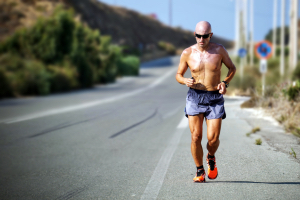
All About Exercise
 By Dr Satish K Gupta*
By Dr Satish K Gupta*
How much exercise is required?
Any amount of walking is helpful. And health benefits rise with every step but peak at 10000 steps, after which beneficial effects reach a plateau. Get, set, and start walking. The benefits of walking are proven now. Walking not only reduces the risk of heart disease but also cancer and early death. Walking prolongs life. The facts stand proven by a seven-year-long follow-up study.
Is it essential to have a step counter?
No, don’t defer exercise if you are not tech-savvy. Counting just motivates helps to set a goal and imparts a sense of achievement as the goal is achieved. However, counting steps may be helpful for those who engage in unstructured, unplanned physical activity such as housework, gardening and dog walks and feel mission the exercise.
Does unplanned exercise provide health benefits?
Yes, the study proves a positive association between incidental steps (steps taken during routine daily life activities ) and a lower risk of both cancer and heart disease.
Physical activity in itself is a magnificent phenomenon. Further, when blended with a healthy green diet, adequate sleep de-stressing, and connecting with family and friends – turns it into a magic recipe for nurturing the fountain of youth.
How powerful was the study?
The study, published Monday, September 26, 2022, in the Journal of Internal Medicine, followed 78,500 people between the ages of 40 and 79 from England, Scotland and Wales who wore wrist step counters for 24 hours a day over a seven-day stretch.
After counting each person’s total number of steps each day, researchers placed them into two categories: Lesser than 40 steps per minute – routine speed, like walking from room to room – and more than 40 steps per minute, or so-called ‘purposeful’ exercise walking.
In the third category came the peak performers – who took the most steps per minute within 30 minutes during the course of a day (note, again, those 30 minutes did not have to occur in one go or in a sequence).
After a follow-up of about seven years, researchers compared the exercise data to medical records of these subjects and found people who walk briskly – approximately 80 steps per minute – showed the biggest reduction in risk for heart disease cancer and early death from any cause.
Hence, the takeaway is that intensity of stepping exercise matters – over and above volume. So prefer Brisk walking over casual walking.
What are the other benefits of exercise?
Another study published a few days back found that walking 10,000 steps a day lowered the
risk for dementia by 50%. Risk decreased by 25% with as few as 3,800 steps a day.
Does the speed of walking matter?
Yes, walking at a brisk pace adds to the benefits! if one walks at a brisk pace of 112 steps a minute for 30 minutes, it reduces the risk by maximum, a phenomenal 62% reduction in the risk of dementia. And please be delighted to note that this 30 minutes of fast-paced walking is not required in one go – it could be spread out over the day.
What about becoming breathless during exercise?
That too can be a good parameter to count the exercise intensity and peaks. But step counter and sweating are much safer parameters.
But what does breathlessness mean when applied to exercise? It’s not gasping and panting so hard one can barely breathe.
Instead, breathlessness is when you are walking with someone talking and you have a bit of trouble completing the sentence in one breath.
Is exercise-related risk reduction equal for all diseases?
62% risk reduction for dementia, the figure reaches almost 80% for CVD mortality and incidence and much less (approx. 20%) for cancer. The association between peak 30-minute steps and risk reduction is dependent on the disease being studied.
Does age matter?
Benefits are obviously more for those getting slow by ageing. So think rather quickly as you age by boosting exercise and mental activities.
How does the exercise work?
Exercise pushes the body in general: can generate more muscle, a bigger heart and better fitness. Exercise increases insulin sensitivity, gears up joints and speeds up the metabolism, all of which are known protective factors for cardiovascular disease and cancer. Brisk walking also brings extra benefits in terms of blood pressure reduction and cardiovascular training and diabetes control.
Also, physical activity often jumpstarts other healthy habits, such as an improved diet, and discourages unhealthy ones, such as smoking. It takes out laziness and improves alertness and work output.
How to increase exercise levels?
Spend 30 minutes being breathless at whatever pace you’re at, and then keep challenging yourself to be slightly unsatisfied at your current level so you can get better and better.
Caution
Keep caution. Talk to your Doctor. Start with a low level gradually, and build up slowly. Don’t copy or compete. Individual muscle, lung and heart capacities are different. Avoid Pollution and chilling cold outdoor weather in winters. Have a healthy heart





